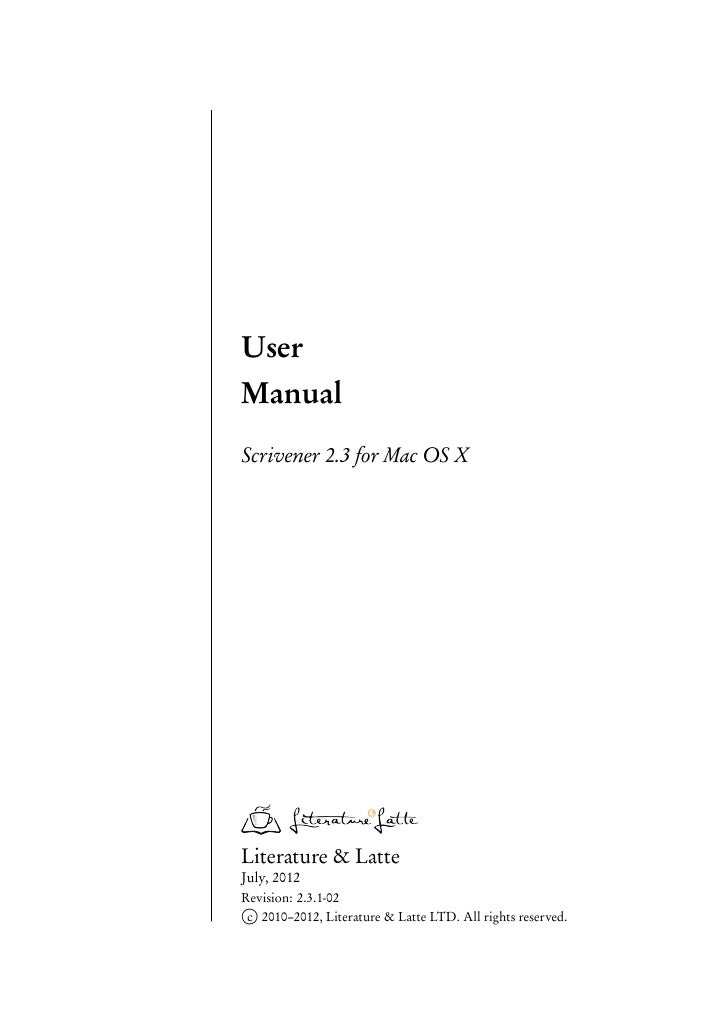
Let’s be honest, Scrivener has a lot going on between the Binder and the Inspector that sometimes it can be distracting when you simply just want to write. Although we know how to hide both the Binder and the Inspector, the designers at Literature and Latte also had in mind to add another great feature that blocks out distractions, and that’s Composition or Full Screen (In Windows) mode.
- For Mac users, go to the menu bar and click on Scrivener, the drop menu will appear and hit Preferences (Cmd-,); Windows users go to Tools, Options (F12). A window will open to General preferences. You’ll notice the tabs that correspond to all the different features. Scrivener Preferences: General.
- Back to: Jump Into Scrivener 3 for Mac: A Mini-Course for Scrivener 2 Users Composition Mode Color Scheme. The default colors for composition mode—that full screen, zen view that I pretty much live in—have changed to a dark background with lighter text.
The beauty of Composition mode is that all the other features like the Binder and the Inspector are still accessible. That means you don’t need to switch back and forth between screens. And if you like playing around with the look of your distraction-free screen, you can customize it to look exactly the way you want it.
Scrivener is one of the best writing software platforms available online. There are many features, such as an outliner. The Scrivener app is available in multiple modes. These modes include Scrivener dark mode, light mode, focus mode, full-screen mode, and much more. There is a free trial available. It is for thirty days.
Let’s get cover the basics: Select a text file or create a new one from the Binder. Go to View->Enter Composition Mode, or just hit the button on the toolbar that has two arrows set diagonally and pointing in opposite directions. This is what Compositon mode it looks like:
The default background is black. The paper color is a very light gray color, and the text is black. At the bottom of the screen, you’ll find the control strip bar. This hides itself so you can have 100% zero distraction. Let’s take a closer look at it and see what it can do:
Scrivener Dark Theme
Control Strip Bar

First off, on the extreme left, you’ll see Text Scale. This means that you can make the print as small or as big as you want it. I like it at 150 percent. Next is the Paper Position, which you can shift to the left, the right, or keep it at it’s default center position. If you don’t want to see any of the black background, you can widen the page or conversely narrow it by using thePaper Width feature. I keep it at the default, which is the standard paper width. Here’s a neat trick: if you want to change the height of the paper, hit the option key (ALT Key in Windows) and Paper Width switches over to Paper Height. Using the slider, you can adjust it to whatever height (or width) you like.
Now we get into the nitty gritty functions that are included in the Inspector like Keywords. Click on the icon, and a small (and adjustable) panel appears. You can add your keywords and move the panel wherever you like on the screen if you wish to keep it open.
Scrivener Mac Dark Mode Themes
There’s also the option to open the Inspector. When you click on that, another panel will open (again, adjustable and moveable) An aside: if you do adjust the size and move it to a different spot on the screen and later close it, Scrivener remembers the settings the next time you open it. You’ll see in this panel, the drop down menus that include all the options from the Inspector.
With Inspector Panel Open
If you want to look at another document, you don’t have to switch back to the screen that shows the Binder. Just click on the Go To icon and you can select a different document.
With Words/Character Count, you won’t be left in the dark of how much (or little) you’ve written. You’ll always know whether you reached your daily goal or not. Lastly, there’s Background Fade. Here you can control the transparency of the background by moving the slider. To exit Composition mode, you can either hit the ESC key or the two arrow button on the extreme right.
Now for some fun stuff. If you want to change the color of the background, the paper and text type, go to Preferences->Compose (Windows go to Tools->Options->Appearance. Select in the pane that says Colors “Full Screen” hit the expansion button and you’ll the different options). In the area that’s labled Customizable Colors, you’ll see listed Background. Select that and click the color box underneath Background to activate it. A color wheel window will open. Select the color you’d like to set your background. Follow the same steps, for changing the color of your paper and type color—with text color make sure to select the box that says override color (the Windows version doesn’t have this box to click). This what my screen looks like after I made my changes:
With different background, paper and text colors.
If you rather have an image that inspires you instead of selecting a different color, select choose texture. Your directory will open and from there you can select a photo that will fire up the muse. I selected this background:
Scrivener Themes For Windows
A few things to note: If you want to hide the scroll bar, go to Preferences and in the area that says Scroller Type, click on the expansion arrows and select No Scroller (Windows users, you don’t have this option yet).